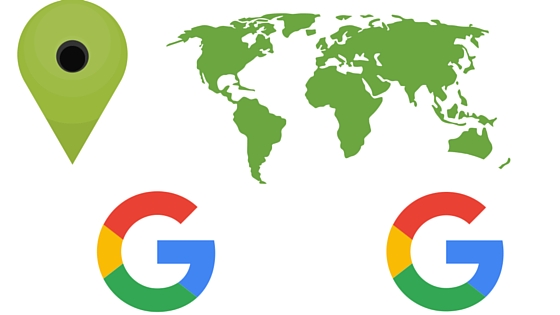One of the very first questions entrepreneurs ask themselves is: “Where is my ideal customer located?” This answer would vary depending on the industry and nature of the business. For example, an ecommerce company selling female fashion within the UK should target users located in the UK. Structuring your AdWords targeting should be pretty simple, right? It should be simple but the double-layer targeting option in Google Ad Words has led to advertisers getting things a bit mixed up.
With Google Ad Words, you have two levels of targeting that should be fully configured according to your advertising goals. These location targeting levels will be discussed below as their impact on an account’s quality score. For clarity’s sake, a quality score is a grade (1-10) used by search engines like Google, Bing and Yahoo to assess the relevance of your ad to users. It is a relevance score that is determined by the connection between your keywords, ads and landing page. A higher quality score means you will pay less and rank higher during the ad auction. You might be thinking this is a bit of jargon or too technical. We’ll get back to the topic of the quality score after looking into the targeting layers in Ad Words.
Google Ad Words location settings:
- Primary Location Settings: This is the first layer of location setting that is widely used by most advertisers. Advertisers are given the option to choose locations based on search, radius, location groups and bulk locations. With the first option in the primary location setting, advertisers can search for specific locations like London, United Kingdom and include them in the list of their targeted locations. With radius targeting, one could add a mile or kilometre radius around a given city. For example, 6.0 miles around Manchester is a radius targeting option. The third criterion on the primary targeting layer is location groups. Location groups are based on places of interest such as airports, universities and central communities and demographic elements such as household income tier. Advertisers can also bulk update locations for respective campaigns.

- Advanced Location settings: This is an area where most advertisers fail to configure correctively. This advanced location setting has a target (inclusion) and exclusion option. For the sake of clarity, excluding “people in, searching for, or who show interest in my excluded location” will not restrict your ad from showing up to users outside your target location. Let’s break it down, so it is simple enough for everyone. A plumber based in Manchester only provides services to residents in Manchester, England. An Ad Words campaign has been set up with a primary location setting as ‘Manchester, United Kingdom.’ On the target section of the advanced location setting options, the advertiser selects “People in, searching for or who show interest in my targeted location” and goes ahead to the second option on the advanced settings, to exclude “people in, searching for, or who show interest in my excluded location.” With these settings, the advertiser’s ads will be displayed to users in other countries such as Algeria, Albania, Andorra and a host of other irrelevant targets.

Evaluating Location settings
It is important to utilise the dimensions tab located on the campaign settings to identify the locations of users viewing your ads. The image below clearly indicates that the advertiser’s ads are displayed to users located in countries that are not relevant to his business. This arose as a result of selecting the wrong target criteria in the advanced location settings option. Selecting “people in my targeted location” will ensure ads are only displayed to users in your target location.

So, how does this affect quality score?
So let’s make sense of all this, right? As we said earlier, quality score is all about ad relevance. Showing relevant ads to the right users will earn you a higher quality score from Google and the other search engines. As such, a higher click through rate to a great extent indicates ad relevance. Attracting impressions for users outside your target location will reduce your click through rates and negatively impact on your quality score which will then lead to a higher cost per click. For the sake of simplicity, users are more likely to click your ad if their search query corresponds with your ad message and thus, signalling relevance. Going back to the Manchester plumber example, a user based in Manchester, New Hampshire (USA), could type a query like: “emergency plumbers in Manchester” and be shown an ad with a description like: “The UK Based Manchester Plumbers.” The user will ignore the ad as it is not relevant to their need. They are based in Manchester, New Hampshire, USA and not Manchester, United Kingdom. This reduces the click through rate which further affects the quality score from Google.
In a nutshell, the appropriate targeting option needs to be selected at both the primary and advanced location settings to ensure ads are displayed to the right users. Effectively utilising this will improve an advertiser’s click-through rate, quality score and reduce the average cost per click for each campaign. If you are looking at improving your PPC campaign or launching a new campaign, our team of Ad Words certified professionals will be happy to help. Why not drop us a mail or call us on 01992 582 824.
